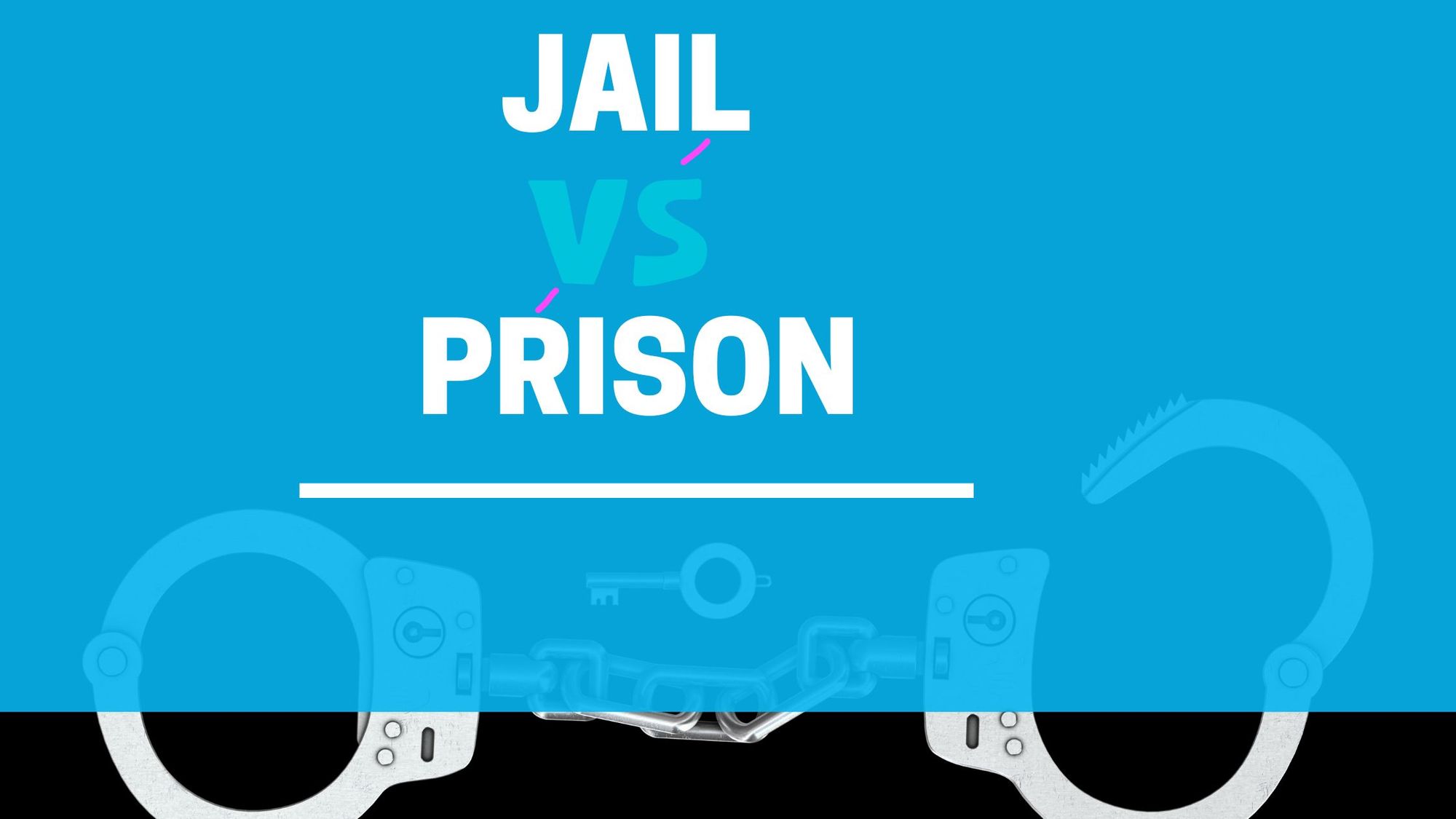Jail Vs Prison: What Is The Difference Between The Two?
What is the difference between a Jail and a prison? We have explained the difference between a Prison Vs a Jail in the US.

While incarceration is designed to be one of the worst experiences for an offender, making sure they realize their mistake and do not repeat it in the future. The policies, rights, and day-to-day routine of an offender are different depending upon where they are sent to serve a sentence. Be it a jail or be it a prison.
On the surface, both the jail and prison are a place of confinement; however, the difference between the two is strikingly massive, and depending upon the nature of an individual's crime, they are sent to prison or jail.
What are the rights of prisoners?
Regardless of an offender serve their time in jail or prison, they all have guaranteed rights, which includes:
- Right to human dignity.
- Right to basic minimum needs.
- Right to communication.
- Right to access to a legal representative or a lawyer.
- Right against arbitrary prison punishment.
- Right towards meaningful and gainful employment.
- Right to be released on a due date.
What is a Jail?
Typically operated by county governments under the direct command of a county Sheriff’s jurisdiction, Jails are placed in a region where the population is small and architecturally designed for a shorter stay of an inmate, which can range from awaiting trial or a shorter sentence of 72 hours to 6 months (although this number may vary depending upon the nature of the crime.)
Incarcerated inmates are usually those who are sent by the local law enforcement or local government agency. Jails are often operated as work release programs and boot camps, whereas some are even famous for educational, substance abuse, or vocational programs.
In jail, there are typically two types of distinct populations; the first are inmates who have committed minor crimes, ranging from misdemeanors or violations of their probations. On the other hand, the second group comprises innocent people as they are undergoing their trial and have not been sentenced or charged with any felony.
Additionally, there are smaller holdings which are often referred to as “Jails,” and since they are operated by the municipal governments, people often refer to them as a jail. In the US, from 1980, the proportion of the jail population consisting of pre-trial detainees has increased from 50% to 75%.
What is a Prison?
On the other hand, prisons are a completely different story from Jails.
They are operated by either a State Government or the Federal Government; in the US, it is either the State Government or the Federal Bureau of Prisons (BOP).
In prison, the incarcerated inmates are those who have been convicted of serious felonies and were found guilty. Prisons also tend to be much larger in size and population, and some of them are owned by private institutes, which are done by several States as it eases the burden on their relative authority.
The State of Arizona is one such example where out of 16 prisons, 6 are privately owned, helping state authorities focus their attention on different issues.
Prisons have different security classes, which include Level 1 prisons being the most minimum security ones to level 5 prisons which are closed facilities. As the prison security class increases, the more serious offenders they house.
While prisons are designed to be facilities that are “not pleasant,” to correct incarcerated individuals' behavior, they offer different educational and job programs that help an inmate’s behavior to be corrected, or at least improved so that upon the completion of their sentence, they are sent back so that they can play an active role in the society.
Jail vs Prison: What is the difference between the two?
The following is the difference between a Jail and a Prison which includes:
- Prisons are better designed and developed since they are holding long-term incarcerated individuals, and this is the only way to meet their living needs; otherwise, serious issues may erupt. Jails are not well developed, and the facilities offered in jails are not well developed as there is no need since they are holding more transient populations.
- Jails are famous for causing suffering to their inmates due to budget cuts since they are run by the local government, thus leading to lower quality or inadequate food. This is also a reason why there is a constant flow of inmates asking for prison time rather than jail time.
- Educational facilities are also much better in prisons than in Jails. This is also because the authorities employ some of the best minds to ensure inmates' behavior is corrected. Also, Prisons offer job opportunities after first offering technical courses to inmates, so inmates can earn money while serving their time.
- Jails also have fewer accommodation facilities than there are prisons.
- The level of security is almost the same in every jail. However, prisons have a different security class depending on the kind of incarcerated individuals.
- Prisons also have common rooms, and once in a while, there is also a movie or recreational night for inmates to gather around and see what is happening in their outside world.
Do Jail or Prison inmates get to meet their loved ones?
Yes, in both of the cases, the inmates have a right to visitation.
The visitation can be made through a phone call or a physical visit to the facility.
However, depending upon the type of facility, the warden has full authority to decide the visiting hours and how long a person can visit the inmate. Regardless, the visitations are allowed in either the case of a jail or a prison.
What are the problems with Jails?
As jails are designed for inmates who have a shorter sentence or in a pre-trial phase, jails simply do not have the needed services to provide for their incarcerated inmates, and this is why inmates serving in jail complain of inadequate medical care, lack of nutritional food along with other inappropriate limitations.
Jails also do not offer exercise access, which is why inmates feel completely isolated and have developmental issues. Due to all these reasons, the inmates going through a pre-trial phase often choose a plea deal so that they can move to prison.
Another major problem with Jails is that they detail innocent people. This is because police officers around the world have the power to detain anyone they want to jail, and if they run into a personal issue, they detain an individual.
What are the problems with Prisons?
Compared with that jail, prisons might seem better since they are well funded and operated by some of the best minds to ensure the inmates who serve their time have behavioral corrections so that they can return to serving in society.
However, prisons can be the worst places for an inmate to be in for several reasons. Since prisons are home to some of the worst criminals, this is also a reason why gangs form up in prison, leading to the deaths of inmates and even guards. Prisons have also been found to be overcrowded and too “inhumane” for inmates. The overcrowdedness causes serious issues, from inmates getting a proper place to sleep to not getting proper food.
Additionally, there are rampant cases of physical and sexual abuse in prisons which are often underreported due to repercussions.
